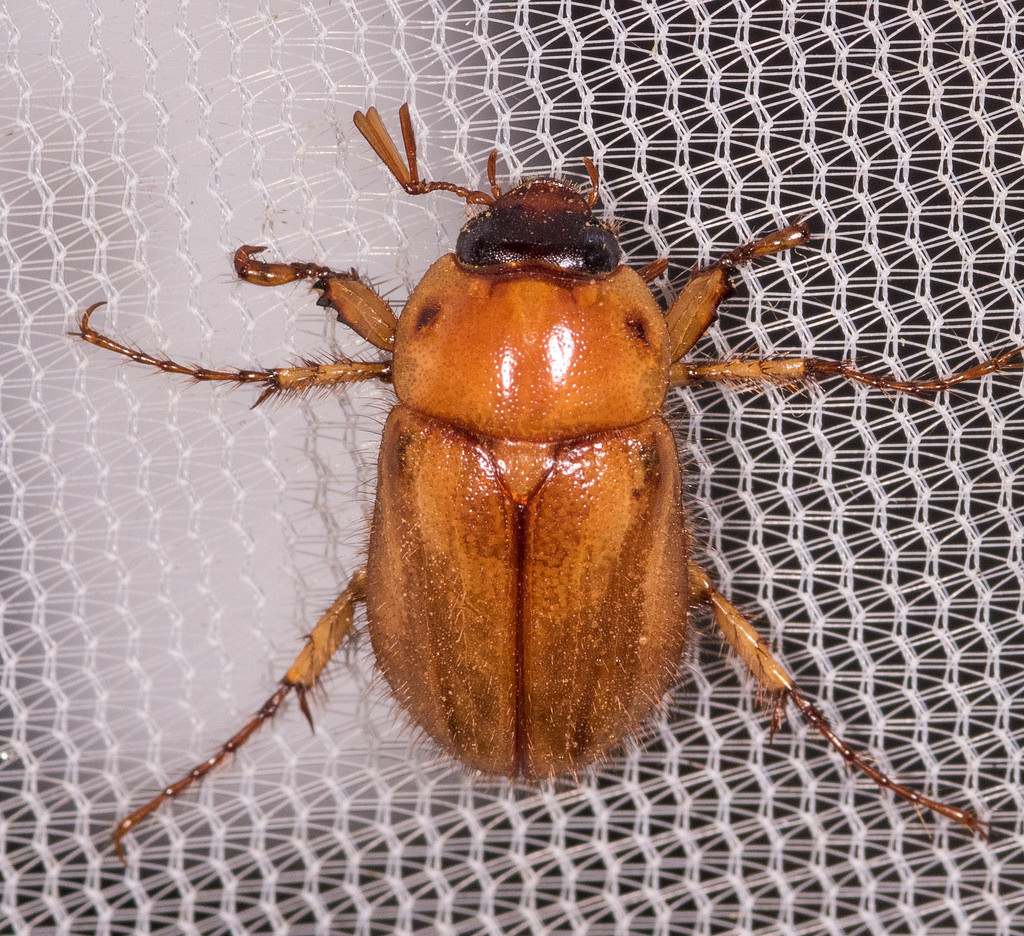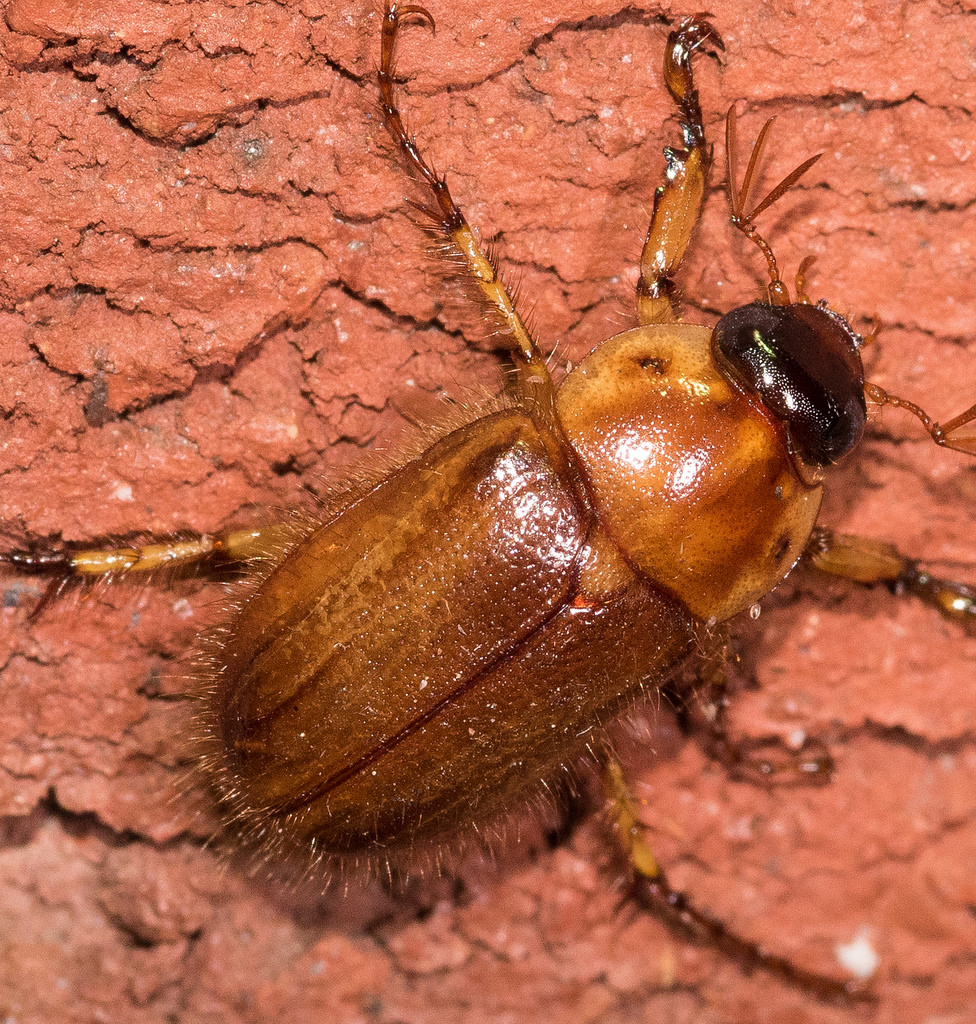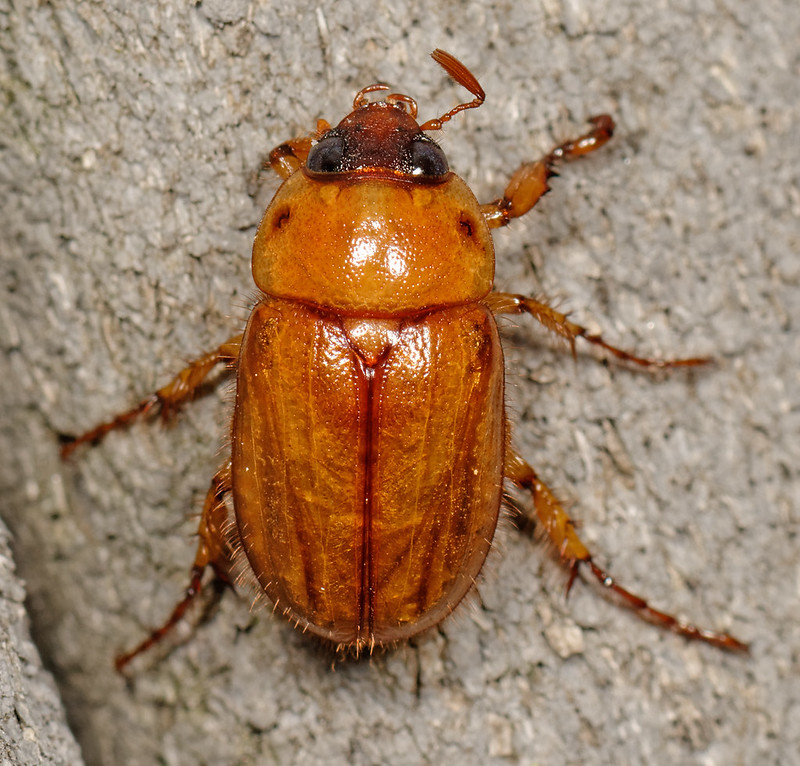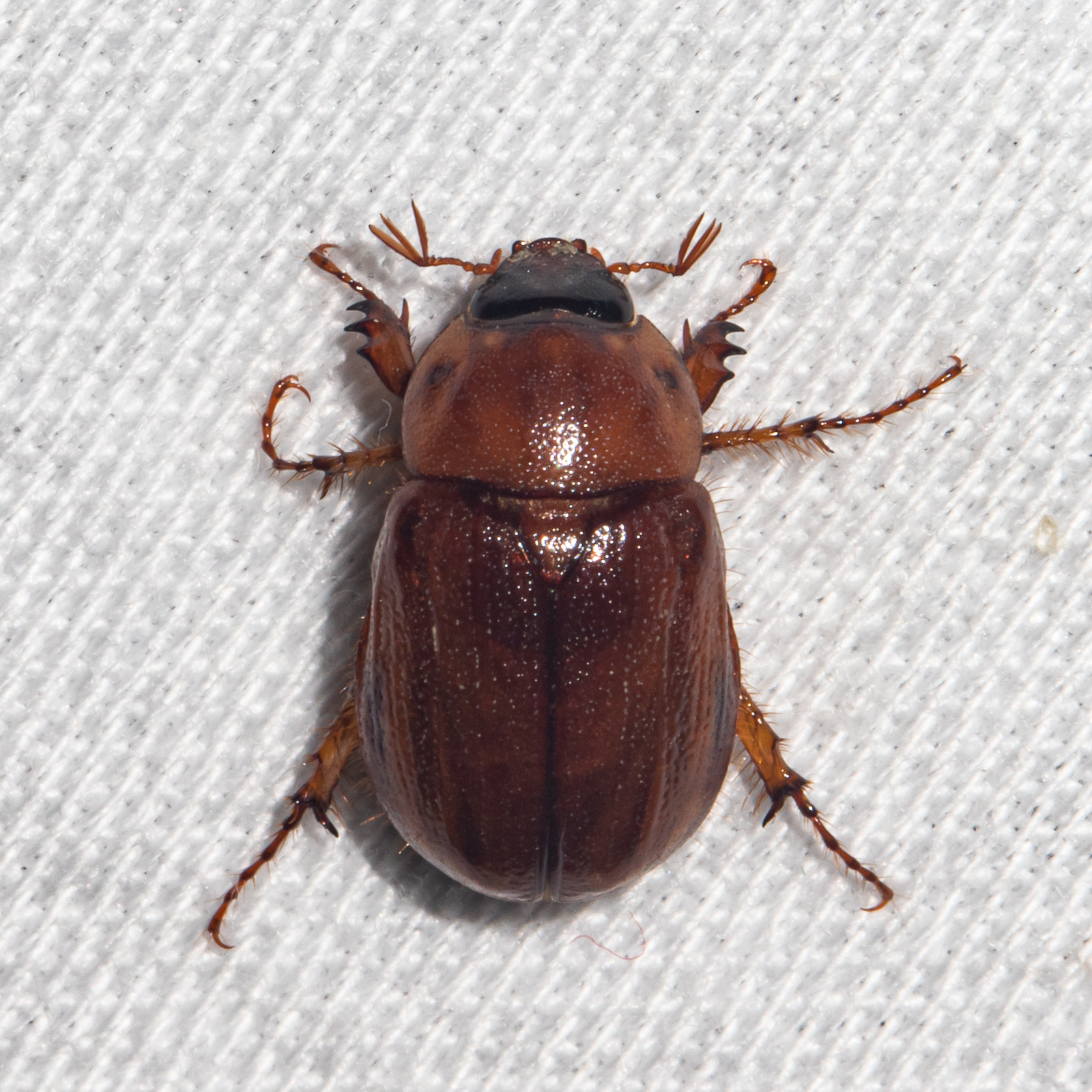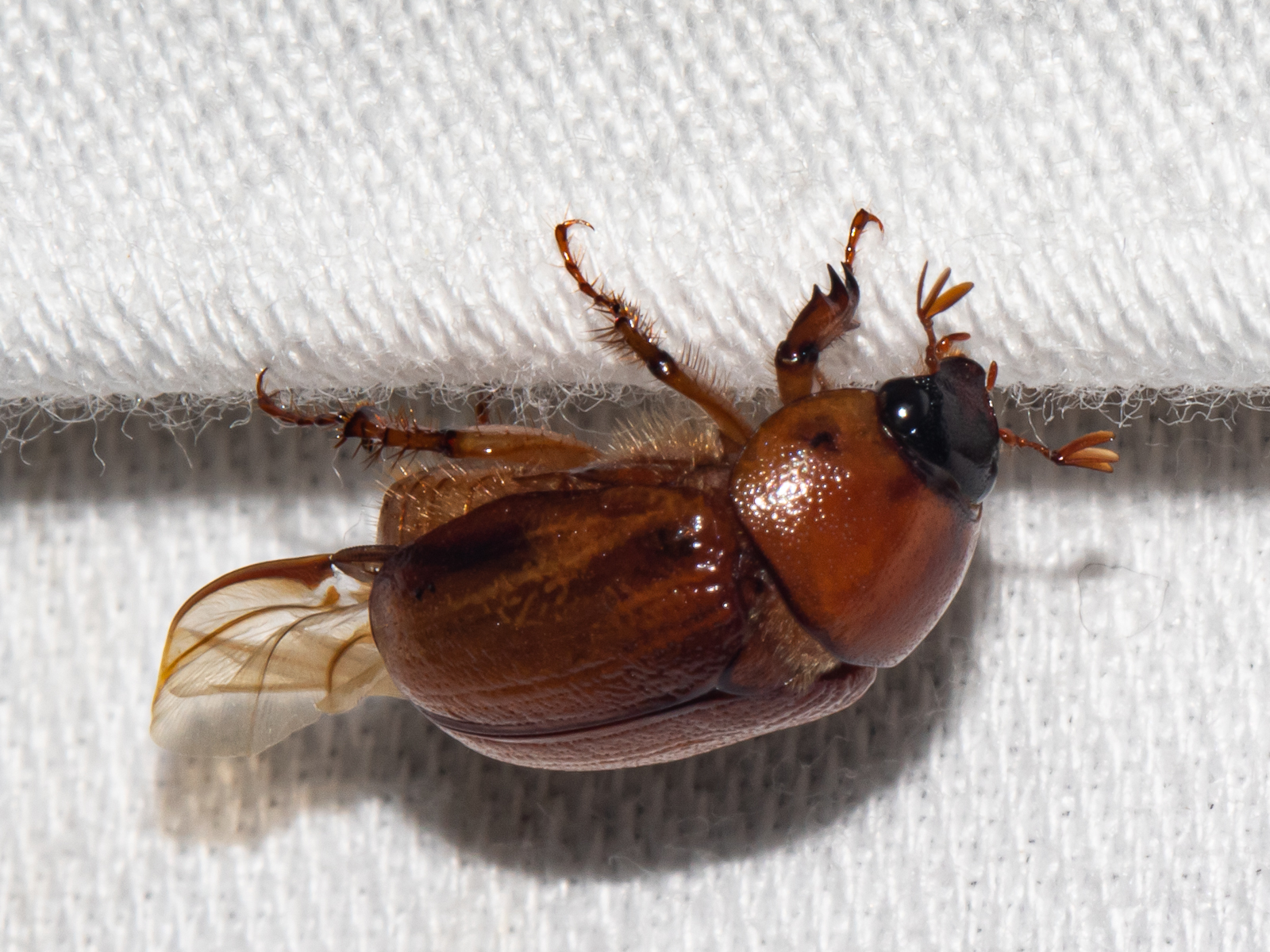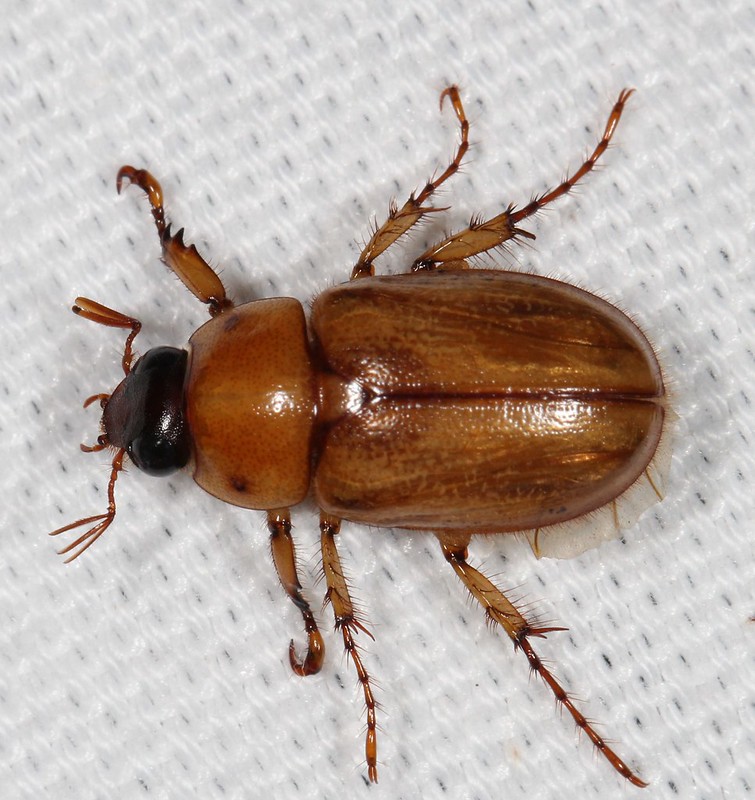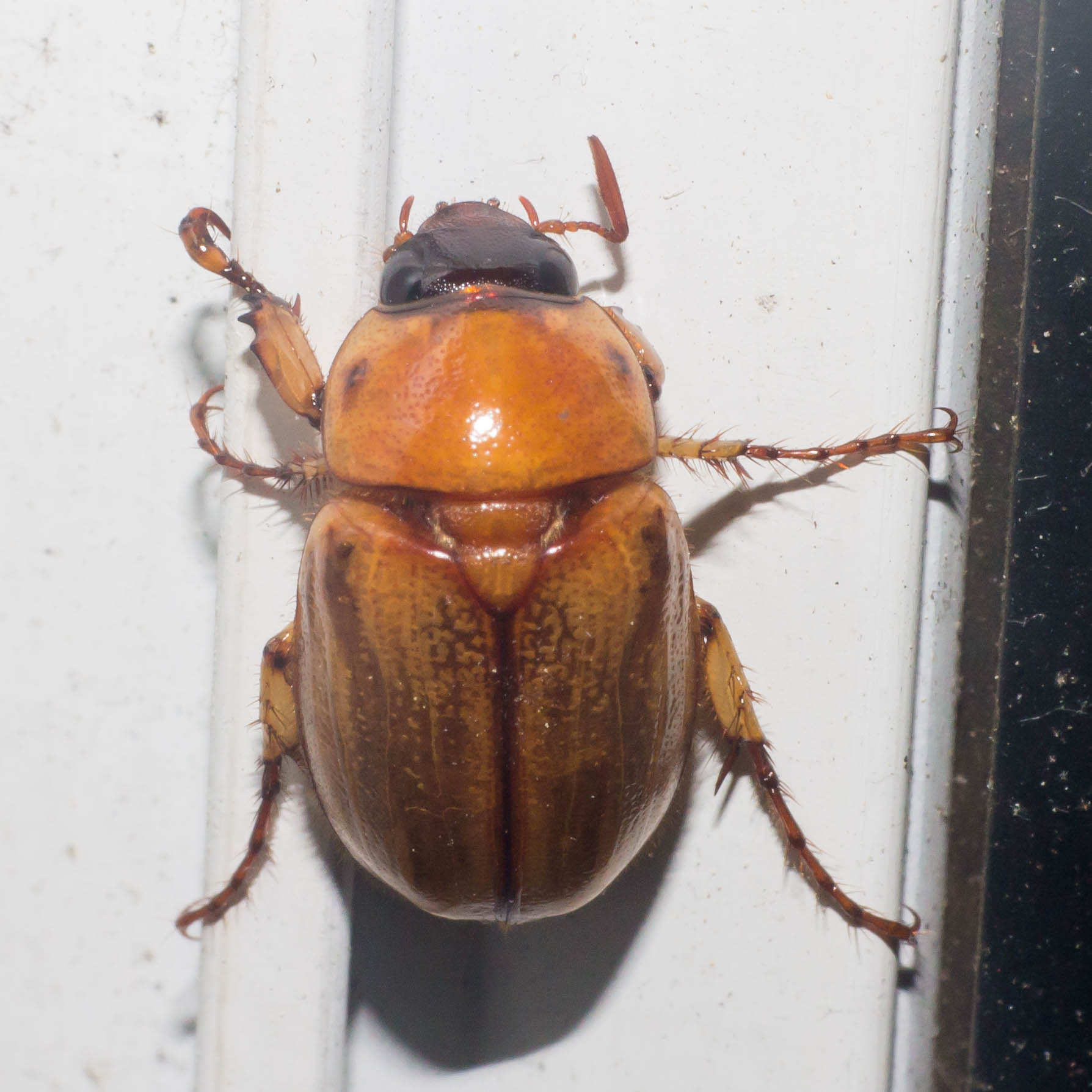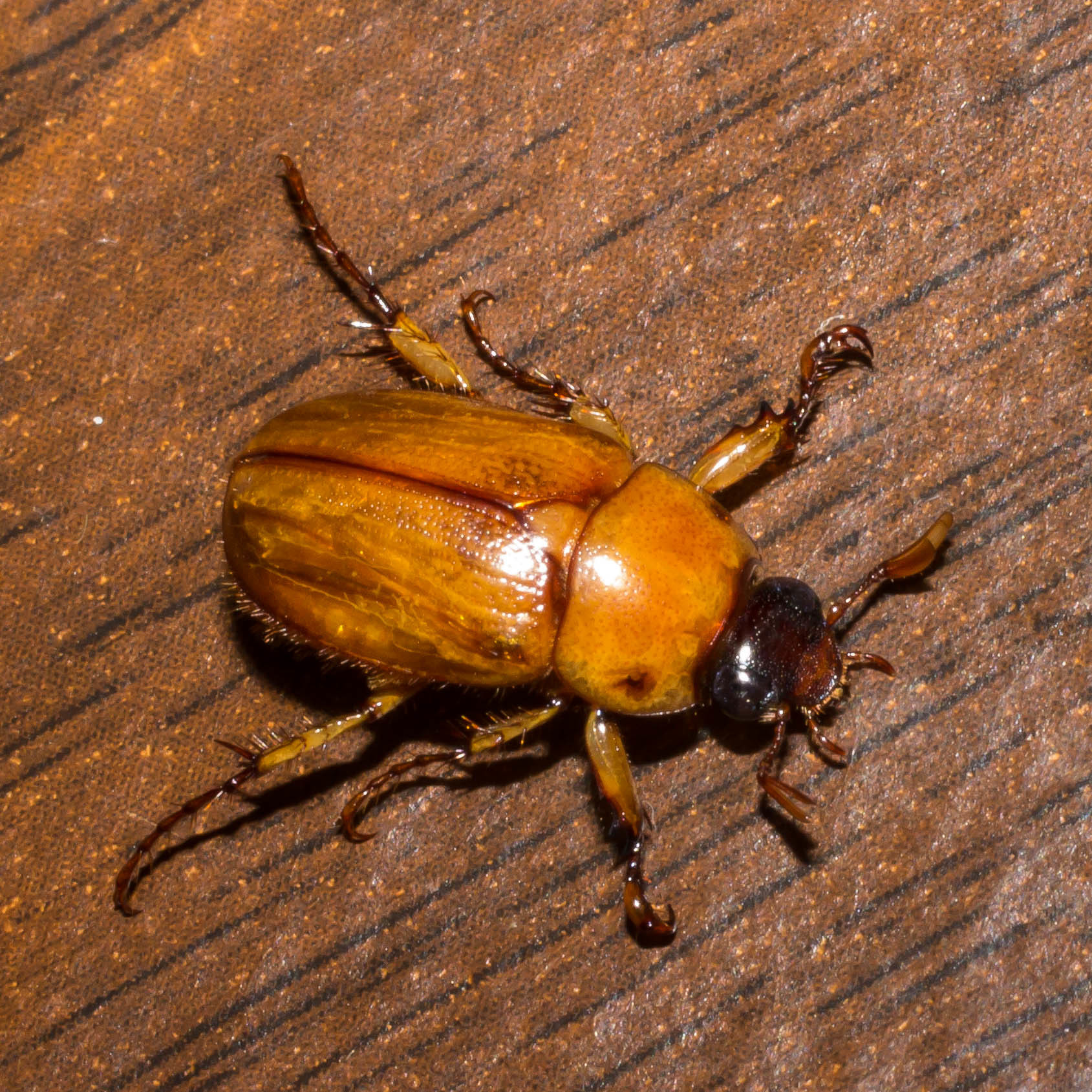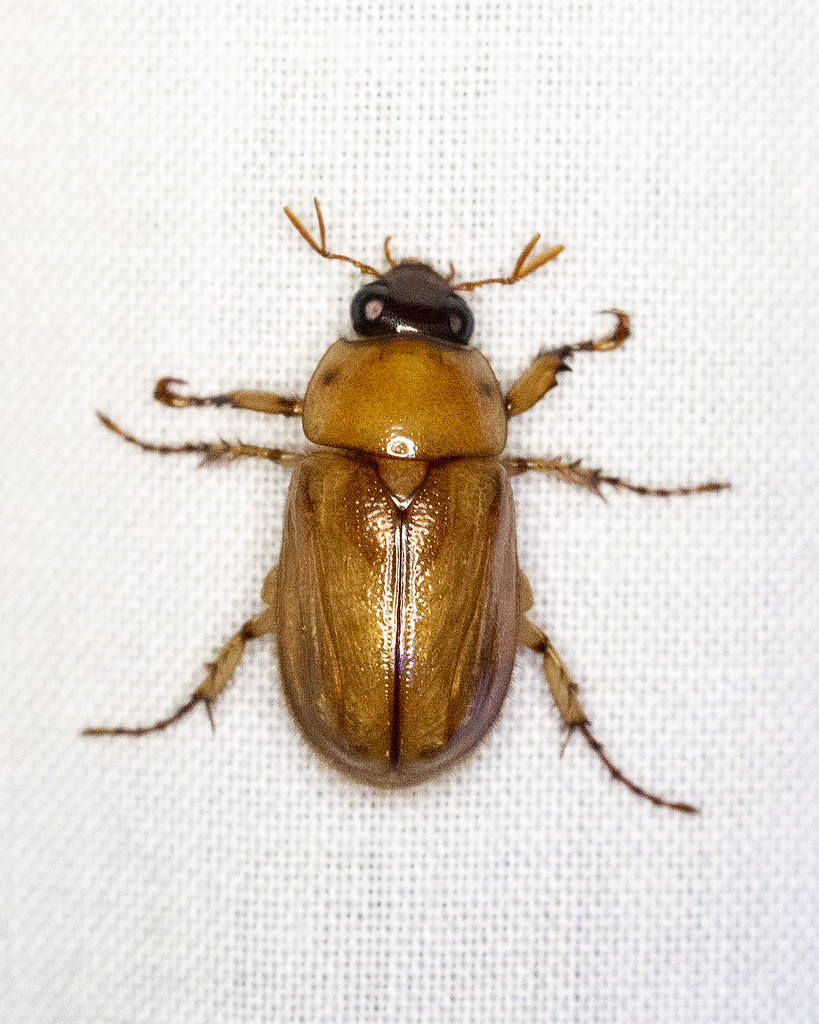Map Snapshot














76 Records
Seasonality Snapshot
Source: Wikipedia
| Cyclocephala | |
|---|---|

| |
| Western masked chafer (Cyclocephala hirta) | |
| Scientific classification | |
| Domain: | Eukaryota |
| Kingdom: | Animalia |
| Phylum: | Arthropoda |
| Class: | Insecta |
| Order: | Coleoptera |
| Suborder: | Polyphaga |
| Infraorder: | Scarabaeiformia |
| Family: | Scarabaeidae |
| Subfamily: | Dynastinae |
| Genus: | Cyclocephala Dejean, 1821 |
| Species | |
|
Many, see text | |
| Synonyms[1] | |
| |

Cyclocephala is a genus of scarab beetles from the subfamily Dynastinae (Coleoptera, Scarabaeidae). Beetles of this genus occur from southeastern Canada to Argentina, India and the West Indies.
Adults of this genus are nocturnal or crepuscular, and are usually attracted to lights.[1]
Taxonomy
[edit]It was published by Pierre François Marie Auguste Dejean in 1821.[2][3] It is the type genus of the tribe Cyclocephalini.[4]
Selected species
[edit]
This is a large genus and new species continue to be added.[1]
- Cyclocephala almitana
- Cyclocephala amazona
- Cyclocephala amblyopsis
- Cyclocephala atripes
- Cyclocephala atripes
- Cyclocephala barroensis
- Cyclocephala brittoni
- Cyclocephala borealis - Northern masked chafer
- Cyclocephala carbonaria
- Cyclocephala cartwrighti
- Cyclocephala castanea
- Cyclocephala castaniella
- Cyclocephala colasi
- Cyclocephala complanata
- Cyclocephala concolor
- Cyclocephala confusa
- Cyclocephala conspicua
- Cyclocephala discicollis
- Cyclocephala discolor
- Cyclocephala elegans
- Cyclocephala epistomalis
- Cyclocephala erotylina
- Cyclocephala fasciolata
- Cyclocephala fulgurata
- Cyclocephala gravis
- Cyclocephala gregaria
- Cyclocephala hardyi
- Cyclocephala herteli
- Cyclocephala hirta - Western masked chafer
- Cyclocephala howdeni
- Cyclocephala kaszabi
- Cyclocephala krombeini
- Cyclocephala laminata
- Cyclocephala ligyrina
- Cyclocephala lunulata
- Cyclocephala lurida
- Cyclocephala macrophylla
- Cyclocephala maffafa
- Cyclocephala melanae
- Cyclocephala melanocephala
- Cyclocephala modesta
- Cyclocephala nigerrima
- Cyclocephala nigritarsis
- Cyclocephala nigrobasalis
- Cyclocephala nodanotherwon
- Cyclocephala pan
- Cyclocephala pardolocarnoi
- Cyclocephala porioni
- Cyclocephala prolongata
- Cyclocephala puberula
- Cyclocephala pubescens
- Cyclocephala putrida
- Cyclocephala quadripunctata
- Cyclocephala rubescens
- Cyclocephala sanguinicollis
- Cyclocephala santaritae
- Cyclocephala sexpunctata
- Cyclocephala signaticollis
- Cyclocephala sparsa
- Cyclocephala spermophila
- Cyclocephala stictica
- Cyclocephala testacea
- Cyclocephala variabilis
- Cyclocephala weidneri
- Cyclocephala zodion
Etymology
[edit]The generic name Cyclocephala means "round head".[2]
Ecology
[edit]Pollination
[edit]Flowers of Nymphaea subg. Hydrocallis are pollinated by Cyclocephala beetles.[5][6] Likewise, flowers of Victoria are pollinated by Cyclocephala.[7]
Predation
[edit]Several species of Cyclocephala serve as hosts for the parasitic larvae of the South American robber fly Mallophora ruficauda, especially C. signaticollis.[8]
Herbivory
[edit]The larvae are root feeders.[2]
See also
[edit]References
[edit]- ^ a b c Ratcliffe, Brett. "Cyclocephala". Generic Guide to New World Beetles. University of Nebraska State Museum - Division of Entomology. Retrieved 29 August 2012.
- ^ a b c Iowa State University. (n.d.). Genus Cyclocephala - masked chafers. Bugguide. Retrieved December 3, 2024, from https://bugguide.net/node/view/11449
- ^ Cyclocephala Dejean, 1821. (n.d.). Interim Register of Marine and Nonmarine Genera (IRMNG). Retrieved December 3, 2024, from https://www.irmng.org/aphia.php?p=taxdetails&id=1306255
- ^ Moore, M. R., Cave, R. D., & Branham, M. A. (2018). Annotated catalog and bibliography of the cyclocephaline scarab beetles (Coleoptera, Scarabaeidae, Dynastinae, Cyclocephalini). ZooKeys, (745), 101.
- ^ Maia, A. C. D., de Lima, C. T., Navarro, D. M. D. A. F., Chartier, M., Giulietti, A. M., & Machado, I. C. (2014). The floral scents of Nymphaea subg. Hydrocallis (Nymphaeaceae), the New World night-blooming water lilies, and their relation with putative pollinators. Phytochemistry, 103, 67-75.
- ^ M Cramer, J., Meeuse, A. D. J., & Teunissen, P. A. (1975). A note on the pollination of nocturnally flowering species of Nymphaea. Acta Botanica Neerlandica, 24(5/6), 489-490.
- ^ Seymour, R. S., & Matthews, P. G. (2006). The role of thermogenesis in the pollination biology of the Amazon waterlily Victoria amazonica. Annals of Botany, 98(6), 1129-1135.
- ^ Barrantes, M. E.; Castelo, M. K. (June 2014). "Host specificity in the host-seeking larva of the dipteran parasitoid Mallophora ruficauda and the influence of age on parasitism decisions". Bulletin of Entomological Research. 104 (3): 295–306. doi:10.1017/S0007485314000029. hdl:11336/85097. ISSN 0007-4853. PMID 24548616. S2CID 206224482.
Further reading
[edit]- Casey, Thos. L. (1915). "A review of the American species of Rutelinæ, Dynastinæ and Cetoniinæ". Memoirs on the Coleoptera. Vol. 6. Lancaster, PA: The New Era Printing Company.
- Dejean, [P.F.M.A.] (1821). Catalogue de la Collection de Coléoptères de M. le Baron Dejean. Paris: Crevot. p. 57.
- Saylor, Lawrence W. (1945). "Synoptic revision of the United States scarab beetles of the subfamily Dynastinae, No.1: Tribe Cyclocephalini". Journal of the Washington Academy of Sciences. 35 (12): 380–385.
